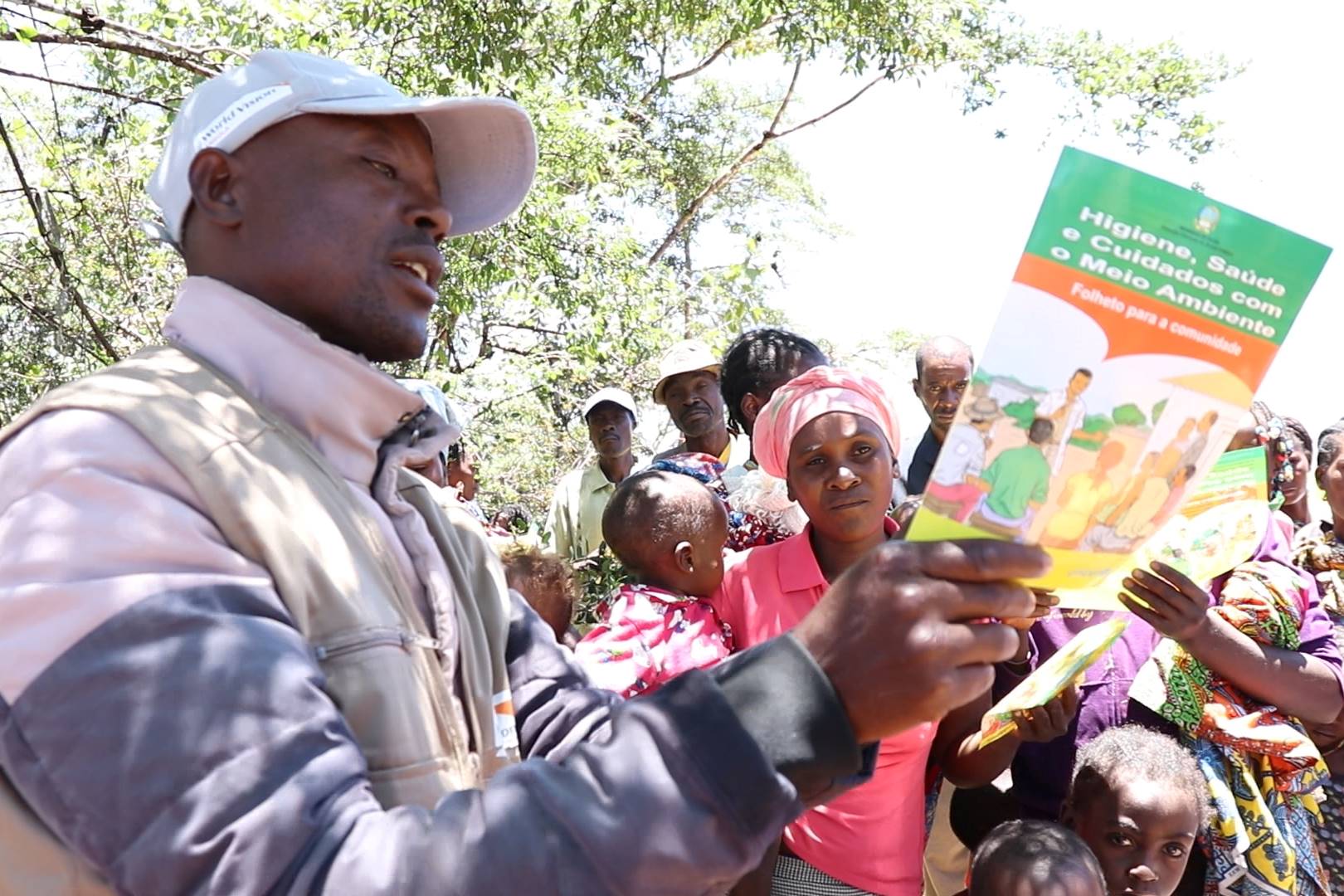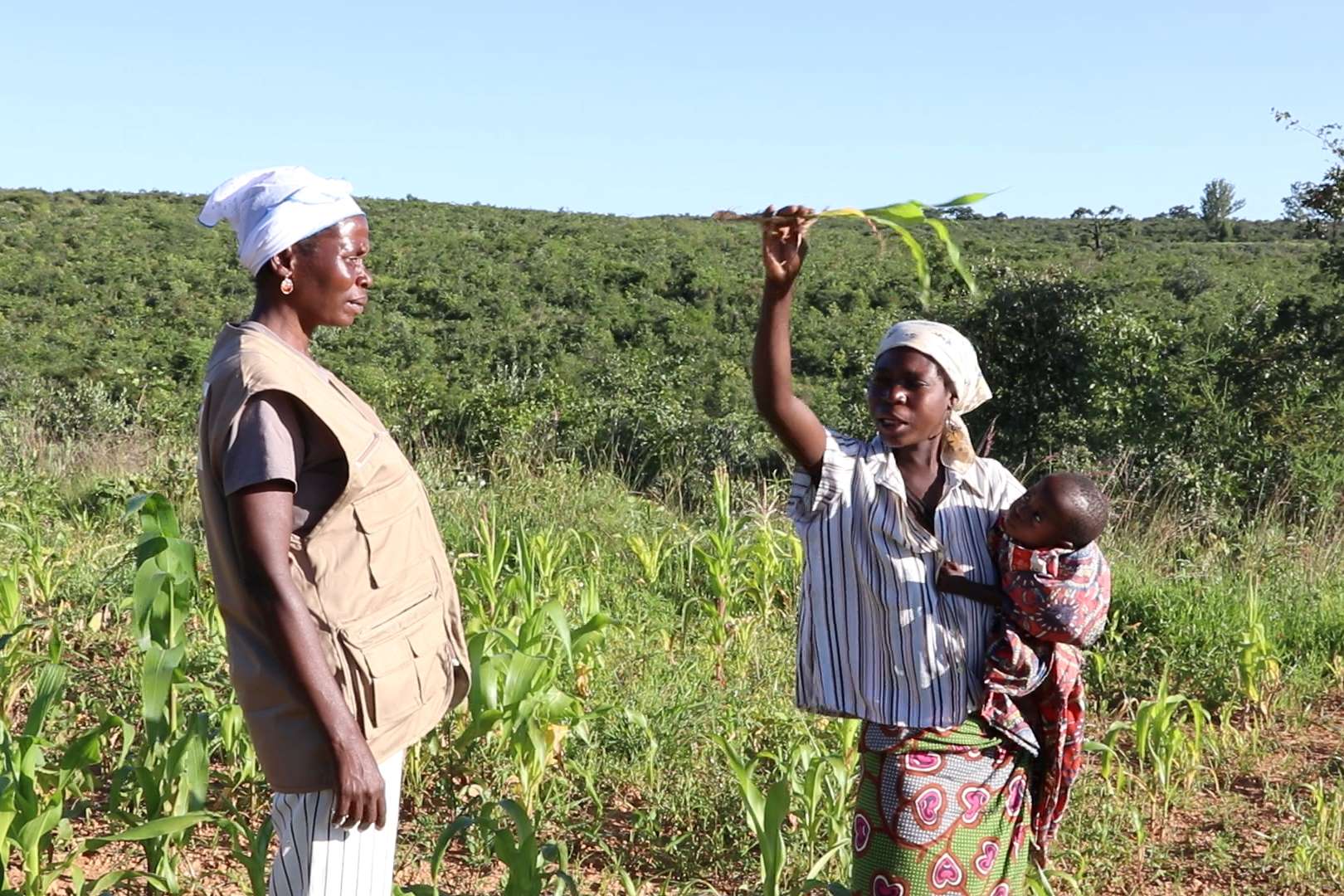Fighting severe malnutrition in southern Angola
Tchamune’s strained expression speaks volumes about the profound hardship she has endured. Such obvious distress would be more understandable in one who has lived a long, hard life, but completely unfathomable considering she is only 3 years old.
On a hot day in southern Angola’s Huila province where families gathered to attend a World Vision nutrition screening for children under five, vacant expressions, disturbingly thin arms and distended bellies were the norm. Tchamune’s mother, Maria, took her and her 1-year-old brother Kwekula to have their nutritional status assessed. Maria shared, “I heard about the community health screening and decided to take my young children along. My daughter Tchamune has been complaining of stomach aches.”

After enduring years of Angola’s worst drought in 38 years, and the associated failed harvests, malnutrition rates have soared in southern Angola and parents are running out of options when it comes to feeding their children.
Maria explained, “The drought affected our family a lot. We planted sweet potatoes and maize but they didn’t grow properly. At the worst times during the drought, none of us in the family ate anything at all for two or three days at a time.
“And because our last crops failed, we don’t have seeds to take from the maize to plant for the next season.”

With no seeds from the last harvest and no money to buy seeds, the future is uncertain. Maria also tries to support her mother, who is blind and lives nearby, as much as she can, but times are very tough.
Like many mothers, Maria is willing to put her children’s needs before her own. On the day of the nutrition screening, she had not eaten at all, but she was able to feed her children some porridge made from pumpkin and pumpkin leaves. “Last week on Sunday, Monday and Tuesday, I didn’t eat anything, but I gave my children some food.”
Eking out an existence in southern Angola was challenging even before the drought, but since the drought began, everything is more difficult. It is common for families in this area to earn a small income selling charcoal, but difficulty accessing water has had a negative impact on that income source. World Vision-trained Community Health Worker, Teresa Ndunguvyongo, explained why, “There were a lot of consequences of the drought on this community. Lack of water was one of the main ones. People had to walk long, long distances to collect water. Families normally earn a small income by making and selling charcoal, but they couldn’t do it often because of how long it took to collect water. It takes about 15 days to make charcoal and people didn’t have as much time to do that, because they were spending so much time just accessing water.”
In her role as a World Vision Community Health Worker, Teresa helps identify severely malnourished children and provides advice to parents. Teresa explained, “Tchamune and her brother are both severely malnourished, Tchamune has a mid-upper arm circumference measurement (MUAC) of 9.5 centimetres, but it should be over 13.5 centimetres.
“Kwekula’s MUAC is 10.4 centimetres but it should be at least 12.5 centimetres.”
Children who have been identified as severely malnourished are administered ready-to-use therapeutic food Plumpy’Nut. Teresa shared, “I advised Tchamune and Kwekula’s mum to give them Plumpy’Nut once in the morning and once in the evening before they eat the family food.”
Climate change has hit southern Angola hard. Crops were damaged during the severe drought and then last year, when crops were planted again, they were damaged from excess rain, leaving families with limited food to feed their children. World Vision’s Nutrition Supervisor, Isais Ricardo, talked about the importance of good nutrition for young children, “If a child’s nutritional intake is not adequate in the first five years of life, assuming they survive, this can have disastrous consequences on the rest of their lives, impacting education outcomes and critical thinking abilities. Detecting severe malnutrition as soon as possible, and administering therapeutic food, is a lifeline for these children.”
Tchamune and Kwekula worked their way through their first packets of Plumpy’Nut determinedly. Their mum Maria expressed, “I’m happy that today the two little ones got Plumpy’Nut.”
Teresa explained, “Giving Plumpy’Nut to severely malnourished children helps save lives. These children are the future of Angola. If we don’t save these children, we can’t move this country forward.”
The Nutrition Systems Strengthening for Effective and Sustainable Care of Children with Severe Acute Malnutrition in Cunene and Huila Provinces project is funded by UNICEF. The project was implemented as part of World Vision’s Southern Africa hunger emergency response.